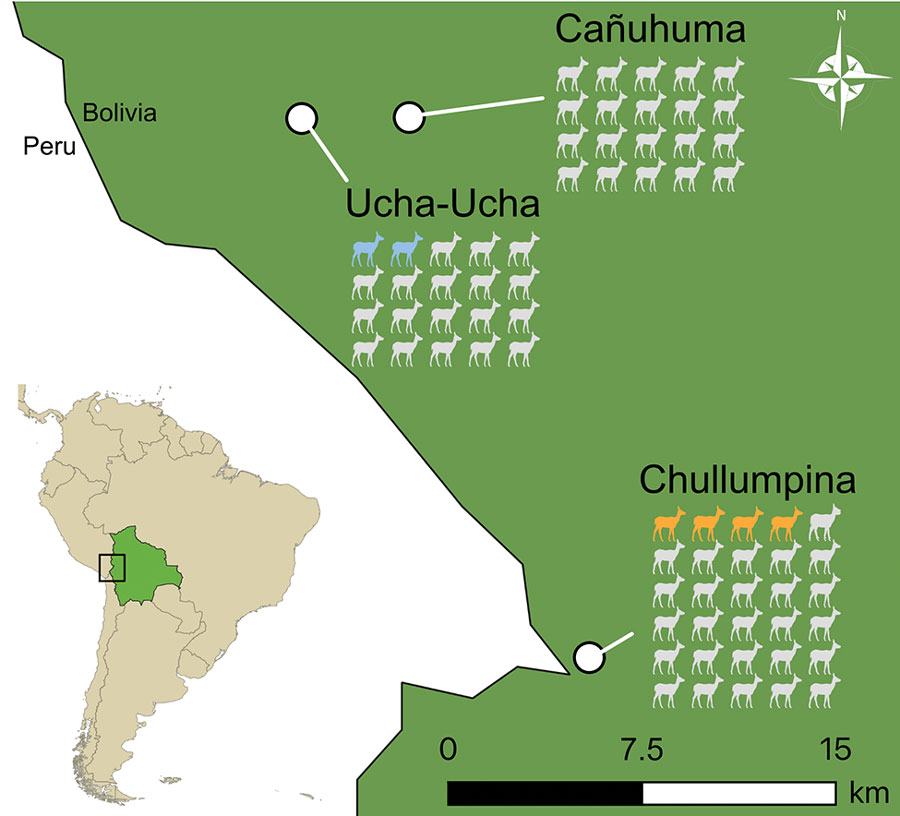Divergent Genotype of Hepatitis A Virus in Alpacas, Bolivia, 2019
Talitha Veith, L. Fabian Beltran-Saavedra, Tobias Bleicker, Marie Luisa Schmidt, José L. Mollericona, Kim Grützmacher, Rob Wallace, Jan Felix Drexler, Christian Walzer, Terry C. Jones, Christian Drosten, and Victor Max Corman

Author affiliations: Charité-Universitätsmedizin Berlin—corporate member of Freie Universität Berlin, Humboldt-Universität zu Berlin, and Berlin Institute of Health, Berlin, Germany (T. Veith, T. Bleicker, M.L. Schmidt, J.F. Drexler, T.C. Jones, C. Drosten, V.M. Corman); Wildlife Conservation Society, La Paz, Bolivia (L.F. Beltran-Saavedra, J.L. Mollericona, R. Wallace); Wildlife Conservation Society, New York, New York, USA (L.F. Beltran-Saavedra, J.L. Mollericona, R. Wallace, C. Walzer); Museum für Naturkunde Berlin/Leibniz-Institute for Evolution and Biodiversity Science, Berlin (K. Grützmacher); Deutsche Gesellschaft für Internationale Zusammenarbeit GmbH, Bonn, Germany (K. Grützmacher); German Centre for Infection Research (DZIF), Berlin (J.F. Drexler, C. Drosten, V.M. Corman); University of Veterinary Medicine Vienna, Vienna, Austria (C. Walzer); University of Cambridge, Cambridge, UK (T.C. Jones); Labor Berlin Charité–Vivantes GmbH, Berlin (V.M. Corman)
Main Article
Figure 1

Figure 1. Alpaca and llama sample collection sites in study of hepatitis A virus in alpacas and llamas, Bolivia, 2019. The number of animals sampled per site is shown, 70 animals in total. Colored icons indicate alpaca HAV-positive animals by quantitative reverse transcription PCR. Inset shows locations of Bolivia and study site in South America.
Main Article
Page created: September 05, 2023
Page updated: November 18, 2023
Page reviewed: November 18, 2023
The conclusions, findings, and opinions expressed by authors contributing to this journal do not necessarily reflect the official position of the U.S. Department of Health and Human Services, the Public Health Service, the Centers for Disease Control and Prevention, or the authors' affiliated institutions. Use of trade names is for identification only and does not imply endorsement by any of the groups named above.
